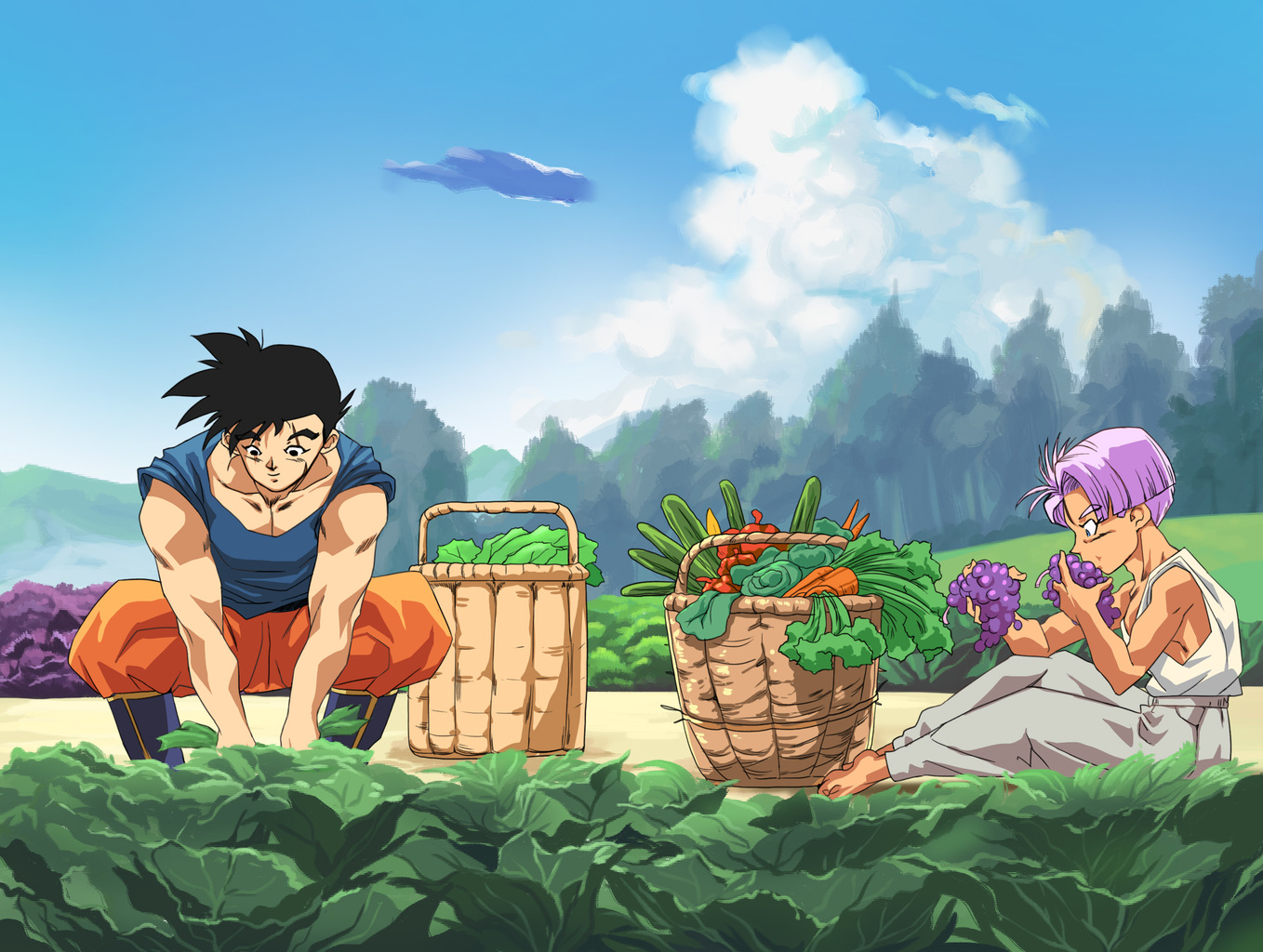
The goal of this small article is to enlighten the occidental viewers, so they can spot and understand the references made to those holidays in Japanese anime. To make it easier to peruse, we sorted them out by months.
JANUARY
New Year (Shogatsu):
The Japanese celebrate Shogatsu for the first three days or the first week of January. It’s probably the most important holiday for the Japanese. Schools and businesses close for one to two weeks, and many people who live away from their families return home to spend this time with their families. Many people wear traditional Japanese-style garments, kimono, and go for the first temple or shrine visit of the New Year and pray for health and happiness in the coming.
In Japan, years are traditionally seen as completely separate from each other, and the new year as a fresh start. This means that in December all the duties should be completed and the new year prepared. In addition, bonenkai parties (“year forgetting parties”) are held in order to forget the worries and troubles of the old year. House entrances and cars are decorated with special decorations made of pine, bamboo and plum tree.
On New Year’s eve, toshikoshi soba (buckwheat noodles) that symbolize long life are eaten. January 1 is a very auspicious day and traditionally believed to be representative for the whole year that has just commenced. Therefore, the day should be full of joy and free of stress and anger. The house and clothes should be clean and no work should be done.
It is also tradition to visit a shrine or temple on January 1. In the New Year’s night big bells are rung 108 times in temples and shrines throughout the country driving away the 108 evil thoughts in Buddhism. Special food, osechi ryori, is eaten during the three days of Shogatsu. For breakfast, otoso (sweetened rice wine) is drunken and ozoni (soup with mochi) is eaten.
Coming-of-Age Day (seiji no hi):
The Coming of Age festival is celebrated on the second Monday of January (it used to be celebrated always on January 15 until the year 1999). Its Japanese name is Seijin no hi. All young people who turn twenty years old in that year are celebrated on Seijin no hi. Twenty is the age considered as the beginning of adulthood. It is also the minimum legal age for voting, drinking, and smoking. Celebrations are held nationwide in every town with most of the people turning 20 participating in formal dresses. Seijin no hi is a national holiday.
FEBRUARY
Setsubun:
Setsubun occurs around February 3 or 4 and celebrates the beginning of spring. In the old lunar Japanese calendar, each season had its own day (called Setsubun) to mark the change of the season. The first day of spring (rissyun) was considered to be the start of the New Year, so the Setsubun at the end of winter was the last day of the year, and had special customs. Today it is the only Setsubun still celebrated.
On the evening of Setsubun, generally, an oni-uchi (devil-extermination) and mame-maki (bean-scattering) ceremony is held. In the evening, throw soybeans inside and outside of the house saying “Oni wa soto. Huku wa uchi! (Out with the devil! In with good fortune!)” in order to drive out any bad spirits. Also, people throw soybeans at another person wearing a devil mask as a kind of fun.
National Foundation Day (Kenkoku Kinenbi):
According to the earliest Japanese history books, on 11th February 660 Before Christ, the first Japanese emperor was crowned. It was declared in 1966 and first celebrated in 1967.
Saint Valentine’s Day:
In Japan, St. Valentine’s Day, February 14, is primarily a day for women to let men know their feelings for them. In addition, there is another day, called “White Day,” (March 14th) for men to express their feelings to women, or to thank and to return gifts to women from whom they received Valentine’s day gifts.
MARCH
Doll’s Festival (Hinamatsuri):
Hinamatsuri is a seasonal festival (called sekku) celebrated on March 3. Also it is considered as a day for girls, most families with girls celebrate it for praying their health and happiness. Probably, the origin of Hinamatsuri is the Nagashi-bina (floating paper dolls down a river). Originally, the paper dolls were made to represent each person and all the ill-fortunes that might visit that person in the coming year were wished onto the doll. Then the doll was sent away on the river, taking the bad luck with it.
White Day:
White Day, March 14, as opposed to Valentine’s Day, is a completely Japanese event. While women give gifts to men on Valentine’s Day in Japan, on White Day, men should return the favour and give gifts to women from whom they received gifts or chocolate, or to women in whom they are romantically interested.
For White Day, cookies, candies or white chocolates are common instead of regular chocolates. There is a superstition among some young people that if someone gives you cookies, that means “I love you” candies mean “I like you” and white chocolate means “Let’s be friends.”
Spring Equinox Day (shunbun no hi):
Around the twenty-third of March (On the day of the Vernal Equinox) graves are visited during this week (ohigan). The day itself is a national holiday since 1948.
APRIL
Flower Viewing (Hanami):
Flower Viewing is an event mostly to go out to hills and fields and enjoy eating and drinking in order to see cherry blossoms. The blooming season is spread over several weeks because Japan is quite long from South to North. Generally, however, people enjoy flower viewing from the latter part of March through the first part of April.
Flower Viewing is still popular events today. However it is mostly known as only banquets which people enjoy eating and drinking under the cherry blossoms in the evening. Some young employees have to be keeping places to see cherry blossoms on sheets of plastic from early morning till night for their companies’ banquets. And some people have boisterous parties until late at night.
In Movie Eight “Brolly”, you can see in the beginning (just before the spaceship landed) that Trunks, Gohan, Master Roshi, Krillin, and Bulma were celebrating Hanami.
THE GOLDEN WEEK (APRIL/MAY)
The Golden Week is a collection of several national holidays within seven days. Together with good placed weekends, the Golden Week becomes one of the longest holidays of the year. Many companies give additional days free to make the Golden Week a continuous holiday, while others do not.
Green Day (Midori no hi):
April 29 used to be the birthday of Emperor Showa who died in the year 1989. After his death, the day was changed into a national holiday for environment and nature since the emperor was very concerned about the environment and loved nature.
Constitution Day (Kenpo kinenbi):
On 3rd May 1947, the new post-war constitution was put into effect. The day remembers the most important changes of the constitution such as the prohibition of leading war, human rights and the sovereignty of the people.
“Between Day” (Kokumin no kyujitsu):
The 4th May has recently been created national holiday to make the Golden Week a continuous holiday.
Children’s Day (Kodomo no hi):
This holiday is also called the boy’s festival (Tango no Sekku) and is celebrated on March 5. Families with boys celebrate this day to wish their sons a good future. Carp streamers are hung outside and samurai dolls put inside the house. They symbolize strength, power and success in life. Traditionally, special sweets are eaten : rice dumplings wrapped in bamboo leaves and mochi wrapped in oak leaves. The oak and bamboo, again symbolize strength and a successful life.
MAY
Mother’s Day (Haha no hi):
Mother’s Day in Japan is almost the same as that in the United States. The second Sunday in May is a day to respect and thank mothers. This event originated from the customs in England and Greece. In 1914 President Willson of the United States declared it in the States, then it was introduced to Japan after the World War II. On the day of Mother’s Day, it is most common in Japan to give red carnation to mothers. Also people often send other gifts as well as flower, such as handkerchiefs, scarves, handbags, wallets.
JUNE
Father’s Day:
The third Sunday in June Japanese are celebrating Father’s day.
JULY
Star Festival (tanabata):
July 7 is the Weaver Star Festival (Tanabata). The Tanabata Festivals held in Sendai (Miyagi Prefecture) and Hiratsuka (Kanagawa Prefecture) are two of the most famous festivals in Japan. Several days before July 7, people write their wishes or poems on strips of poetry paper in various colors, and hang them on leafy bamboo; then on the night of the 7th, they are put out in the garden. These are attractive enough to be called summer Christmas trees.
Ocean Day (umi no hi):
July 20 is the Ocean Day. It’s a newly introduced national holiday.
AUGUST
The Buddhist festival of the dead (O-bon):
This is a Buddhist event, O-bon, occurring from the 13th to 15th of August to hold a memorial service to the spirits of ancestors. Because the spirits of the dead are said to return at this time, this is a festival for welcoming them home, making offerings to them and holding memorial services. In this season, in spite of huge crowds, many people want to return back to hometowns like New Year season.
Many people celebrate this event. Because in Japan ancestors are objects of profound veneration and are believed to have a supernatural power over the living. However, it depends on their religions. Fires are lit at the entrances to homes so the spirits of ancestors do not lose their way, and, in addition to lanterns being lit inside homes, the Buddhist family alters are tidied up and vegetables and fruit are set out as offerings. And when O-bon is over, the spirits are sent on their way by fires to speed their seeing off at entrances of homes.
SEPTEMBER
Respect for the Aged Day (keiro no hi):
Respect for the elderly and longevity is celebrated on this September 15. This is a national holiday.
Autumn Equinox Day (shubun no hi):
Graves are visited during the week (ohigan) before September 23 (Equinox Day). The day itself is a national holiday.
OCTOBER
Health Sports Day (Taiiku-no-hi):
October 10 is Health Sports Day (Taiiku-no-hi.) Its purpose is to familiarize with sports and nurture physical and mental health. Sports flourish in autumn because the weather is good, but, especially on or around Taiiku-no-hi numerous school and regional athletic meets and sports tourneys, Undou-kai, are held.
This day was made national holiday in 1966 to commemorate the opening of the Tokyo Olympics on October 10, 1964.
NOVEMBER
Culture Day (bunka no hi):
November 3 is dedicated to the promotion of culture and the love for freedom and peace. On the culture day, schools and the government award certain persons for their special, cultural activities.
Labour Day (kinro kansha no hi):
While on November 23, Americans are celebrating Thanksgiving; Japaneses are honouring labour. This is a national holiday.
DECEMBER
Emperor’s Birthday (tenno no tanjobi):
The birthday of the current emperor is always a national holiday. If the emperor changes, the national holiday changes to the birthday date of the new emperor. Actually it’s December 23.
Christmas:
Christmas is not a national holiday, but it is celebrated by an increasing number of Japanese.
Oomisoka (New Year’s Eve):
The last day of the year is called Oomisoka in Japanese. To welcome the New Year with good feelings, people clean up their house. Preparations for the New Year are to be made by Oomisoka.

